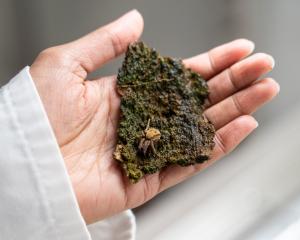
Department of Conservation national eradication manager Stephen Horn said a meat bait, containing sodium fluoroacetate (1080), targeting feral cats, is being trialled to test the effectiveness of the aerial distribution of baits, at one bait per hectare to control cats.
"This method would allow large scale and cost-effective control of feral cats, and be potentially of huge benefit to feral cat management."
It will be dropped by helicopter over a 5000ha block in the Edwards Valley, north east of Hanmer Springs, enabling further research into using the novel bait.
"It’s an important step in national efforts to broaden the toolbox of control tools for feral cats, which are a significant threat to New Zealand’s native species, and are known to kill native birds, lizards, bats and insects," he says.
It builds on two previous trials — one in subantarctic Auckland Island, and one on Rakiura/Stewart Island.
The Auckland Island trial resulted in a 40 per cent reduction of feral cat sightings at one site, and a 65 per cent reduction at another site, using one bait per 25ha (about 25 rugby fields).
On Rakiura/Stewart Island, there was a 71 per cent reduction of feral cats using one bait per 3ha. Interaction by non-target native species was extremely low.
"Currently the bait is unregistered and these trials are a necessary part of the process to obtain registration for the product.
"In the previous two trials we have undertaken, the baits have been hand laid," Horn says.
Both trials were "effective" at reducing feral cat numbers.
Mr Horn says tools to control feral cats and eradicating them on offshore islands are limited, expensive and ineffective.
"There are only two feral cat baits registered for use in New Zealand, however, they are either too labour intensive for large areas, or their success has been mixed."
The Edwards Valley operation would further the department’s understanding of the "best ways to use this new feral cat bait".
"This site has been chosen as it has high numbers of feral cats and the risk to native wildlife is low.
"In preparation for the trial, a camera network was set up over 1000ha and resulted in 22 feral cat detections and nine individual cats identified.
"We expect the 5000ha trial area to have at least 40 feral cats.
"Underpinning this work is our ongoing effort to protect NZ’s precious native species from an introduced threat we must control."
There will be a non toxic drop from August 1, with the toxic application about 10 days later depending on the weather.
Warning signs will be put up at all public points of entry to the treatment area prior to the toxic bait application.
These will be in place for at least six months.
The department warns people not to touch poison baits, watch children at all times if you are in the area, do not eat animals from the area, and that poison baits or carcasses are deadly to dogs.














